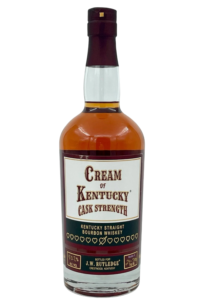Imagine traveling through rural Kentucky, heading south past the enclave of Bardstown, and continuing southwest into Larue County. You barely notice the town of Athertonville on your way to Abraham Lincoln’s birthplace. Larue County, Kentucky, is home to the villages of Attilla, Magnolia, and Tanner; however, Athertonville stands out as it reminds me of 119 Proof Cream of Kentucky.
The Atherton Distillery
From 1867 to 1919, The Atherton Distillery operated on a unique site along the north side of Knob Creek. Yes, that Knob Creek—the name now belongs to one of the Beam small-batch bourbons. At one point, the Atherton Distillery even went by the name Knob Creek Distilling Company.
Cream of Kentucky Distilling Company
In Kentucky’s early distilling days, many distilleries used several names over time. For example, Buffalo Trace Distillery operated under names like George T. Stagg, Ancient Age, and OFC Distillery. Similarly, the Cream of Kentucky Distilling Company carried names such as Atherton, Indian River Distilling Co., May Queen Distilling Company, and William Miller and Company. After prohibition, the Schenley Company reintroduced the Cream of Kentucky label.
119 Proof Cream of Kentucky Cask Strength Bourbon
This bit of distillery history highlights the rich legacy and humble beginnings of the iconic Cream of Kentucky brand. I recently sampled the newly released Cask Strength bottle of Cream of Kentucky, which offers an amazingly bold, throwback bourbon whiskey. To watch our video review, please click HERE.
More on the Cream of Kentucky Brand
In 2021, I wrote a more in-depth article exploring the Cream of Kentucky brand and the historical impact of its marketing and advertising. The advertising is connected to the great artist Norman Rockwell, and in the 1930s and 1940s, it was a leading brand of bourbon whiskey. For a deeper dive into this classic brand—revived by the legendary Jim Rutledge—please click HERE.
Cheers everyone.

Great article!